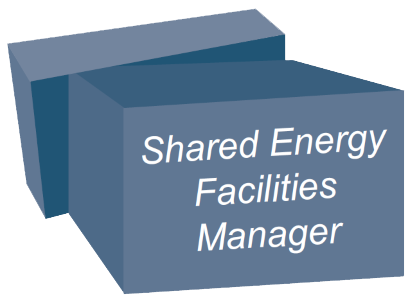Design
Consider Whether this Program In a Box is Right for Your State
The SEFM Program In a Box will be most effective in areas comprising many small local jurisdictions that cannot afford to hire a full-time energy manager for building facilities.
For example, states with different organizing geographies may need to provide school districts with their own energy facilities managers if the school districts encompass a large, populated county.
Justice40 Considerations
Through Executive Order 14008 which established the Justice40 Initiative, the Biden Administration has set a goal of ensuring that at least 40 percent of the benefits of federal investments flow to disadvantaged communities. Justice40 will have significant implications for hundreds of programs across the federal government, including clean energy, climate, and resilience programs that are overseen by the U.S. Department of Energy (DOE) in partnership with states. State Energy Offices and their partners may wish to consider assessing various dimensions of their programs – including such factors as the ability of disadvantaged and diverse individuals and communities to influence, participate in, and access the benefits of state policies and programs – and explore metrics and reporting strategies that will help illustrate the Justice40 impacts of their policies, programs, and investments. Available resources to support these actions include:
- White House landing page for Justice40
- July 2021 Office of Management and Budget Interim Implementation Guidance for the Justice40 Initiative
- Justice40 Initiative Updates from DOE’s Office of Economic Impact and Diversity
- Guidance on Community Benefits Plans in Proposals for IIJA Funding
- January 2023 Addendum to the Interim Implementation Guidance for the Justice40 Initiative, M-21-28, on using the Climate and Economic Justice Screening Tool (CEJST)
- Instructions for using the Climate and Economic Justice Screening Tool
Through NASEO’s Energy Equity Committee , State Energy Offices can learn about ongoing developments and resources that support federal Justice40 and state energy equity and environmental justice goals.
To help states identify the location of disadvantaged communities, the White House Council on Environmental Quality (CEQ) has developed The Climate and Economic Justice Screening Tool (CEJST) . Instructions for using the tool are linked above.
Goals and Name
Writing a concise goals statement for a new shared energy managers program both creates internal consensus and serves as an essential tool for communicating with local municipalities and relevant agencies and organizations. Updating the goal statement over time memorializes changes to program scale, scope, and details.
Naming the program is an important step in the process of branding and advertising the program. Recommendations for program name:
- Reflect the goals of the program
- Solicit recommendations from participating agencies and organizations
View goals established by the Kentucky SEMP program.
Performance Metrics
Program metrics should be defined before the program is implemented. Metrics to consider include specific equity and Justice40 goals, to measure impact on the participating communities.
In many programs each energy manager is responsible for drafting an energy management plan, in addition to identifying potential savings resulting from measure implementation. See page 3 of the case study on the Kentucky’s program for metrics summarizing the program results.
Each energy management plan may consist of:
- An energy policy
- Energy goals
- Operating procedures
- Baseline energy consumption
- Energy benchmarking
- Evaluation and monitoring procedures
Energy managers also are often responsible for writing an energy management communication plan and pursuing building energy certifications such as ENERGY STAR.
Budget and Staffing
Before finalizing the program design, consider budget allocations and staffing requirements for agencies involved.
| Kentucky SEMP | |
|---|---|
| Initial Budget (ARRA-era) | $5 million |
| Total Energy Facilities Managers Staffing (ARRA-era) | 49 managers serving 144 school districts (out of 173 statewide) |
| Energy facilities managers’ territory | Two to seven school districts, depending on size |
| Oversight/support for Energy Facilities Managers | Four regional SEMP coordinators provided coaching, training, monitoring, and support. A training and development program included workshops, trainings, and certifications. |
Eligibility Criteria
Clearly define which communities are eligible to apply for shared energy facilities manager services.
The State Energy Offices should identify the geographic area eligible for incentives. In the Kentucky SEMP, many participating communities were small, rural school districts. Usually, the largest school district in a region added an energy manager to their payroll, and shared that person’s professional expertise and services with several surrounding school districts.
Timeline
Examine the budget and determine a realistic timeline for program launch and duration.
Steps may include: establish goals and metrics, create/finalize a Request for Proposals (RFP) for vendors, hire energy managers and program coordinators, develop solicitation for grant awards to school districts, conduct energy assessments, draft and implement energy management plans, and report program results to State and Federal Agencies.

